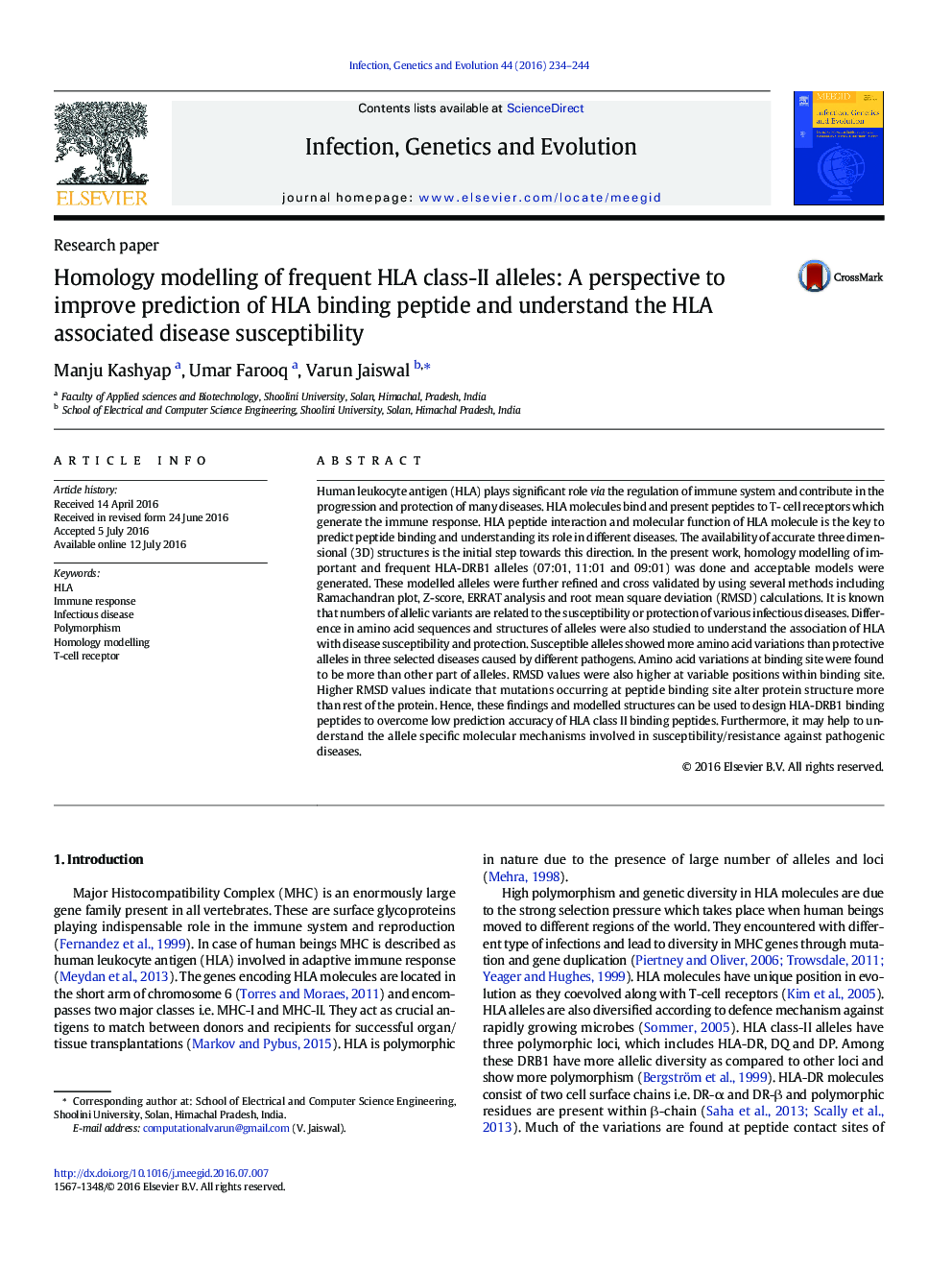| کد مقاله | کد نشریه | سال انتشار | مقاله انگلیسی | نسخه تمام متن |
|---|---|---|---|---|
| 5908137 | 1570159 | 2016 | 11 صفحه PDF | دانلود رایگان |
عنوان انگلیسی مقاله ISI
Homology modelling of frequent HLA class-II alleles: A perspective to improve prediction of HLA binding peptide and understand the HLA associated disease susceptibility
دانلود مقاله + سفارش ترجمه
دانلود مقاله ISI انگلیسی
رایگان برای ایرانیان
کلمات کلیدی
موضوعات مرتبط
علوم زیستی و بیوفناوری
علوم کشاورزی و بیولوژیک
بوم شناسی، تکامل، رفتار و سامانه شناسی
پیش نمایش صفحه اول مقاله

چکیده انگلیسی
Human leukocyte antigen (HLA) plays significant role via the regulation of immune system and contribute in the progression and protection of many diseases. HLA molecules bind and present peptides to T- cell receptors which generate the immune response. HLA peptide interaction and molecular function of HLA molecule is the key to predict peptide binding and understanding its role in different diseases. The availability of accurate three dimensional (3D) structures is the initial step towards this direction. In the present work, homology modelling of important and frequent HLA-DRB1 alleles (07:01, 11:01 and 09:01) was done and acceptable models were generated. These modelled alleles were further refined and cross validated by using several methods including Ramachandran plot, Z-score, ERRAT analysis and root mean square deviation (RMSD) calculations. It is known that numbers of allelic variants are related to the susceptibility or protection of various infectious diseases. Difference in amino acid sequences and structures of alleles were also studied to understand the association of HLA with disease susceptibility and protection. Susceptible alleles showed more amino acid variations than protective alleles in three selected diseases caused by different pathogens. Amino acid variations at binding site were found to be more than other part of alleles. RMSD values were also higher at variable positions within binding site. Higher RMSD values indicate that mutations occurring at peptide binding site alter protein structure more than rest of the protein. Hence, these findings and modelled structures can be used to design HLA-DRB1 binding peptides to overcome low prediction accuracy of HLA class II binding peptides. Furthermore, it may help to understand the allele specific molecular mechanisms involved in susceptibility/resistance against pathogenic diseases.
ناشر
Database: Elsevier - ScienceDirect (ساینس دایرکت)
Journal: Infection, Genetics and Evolution - Volume 44, October 2016, Pages 234-244
Journal: Infection, Genetics and Evolution - Volume 44, October 2016, Pages 234-244
نویسندگان
Manju Kashyap, Umar Farooq, Varun Jaiswal,